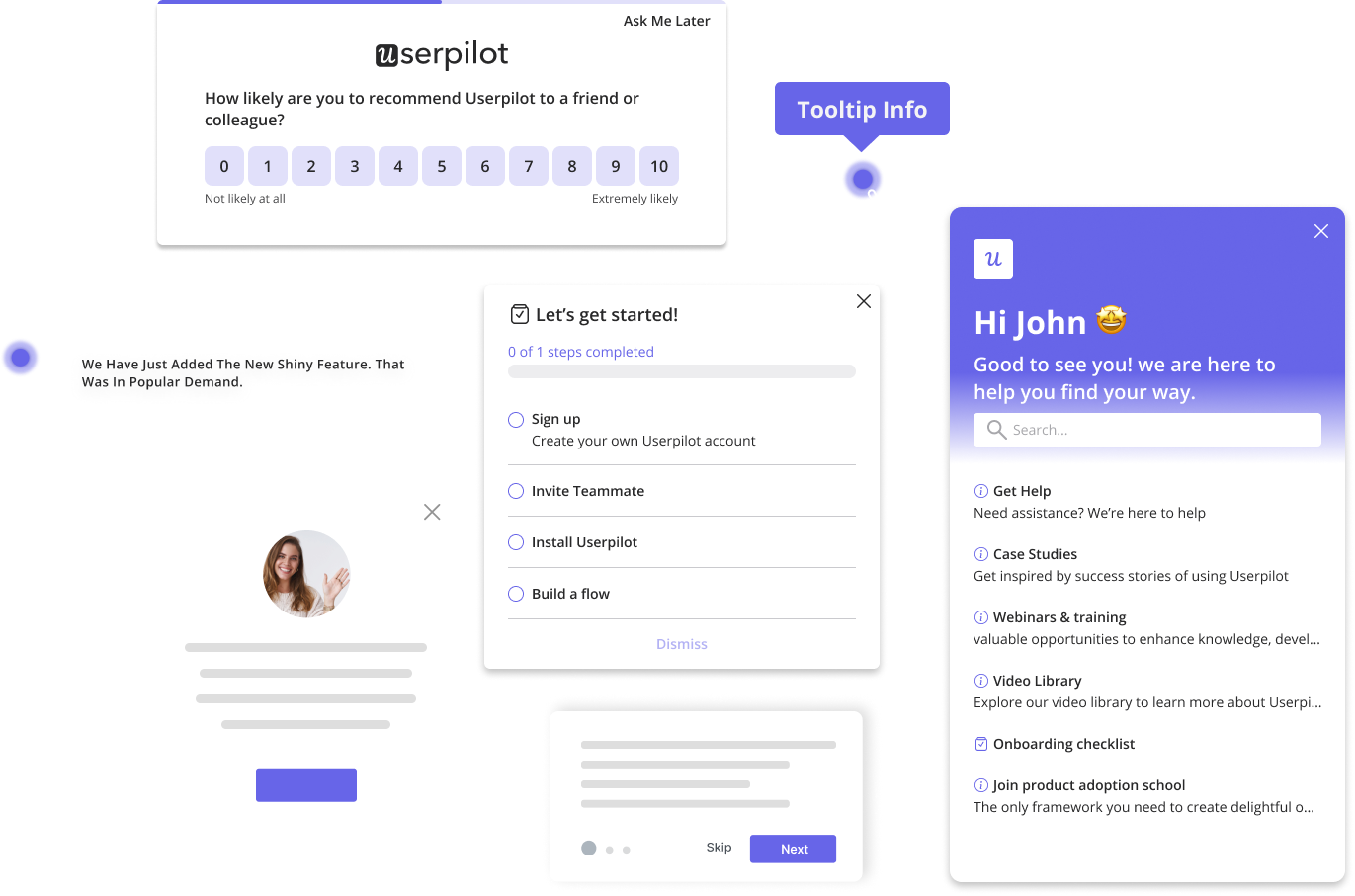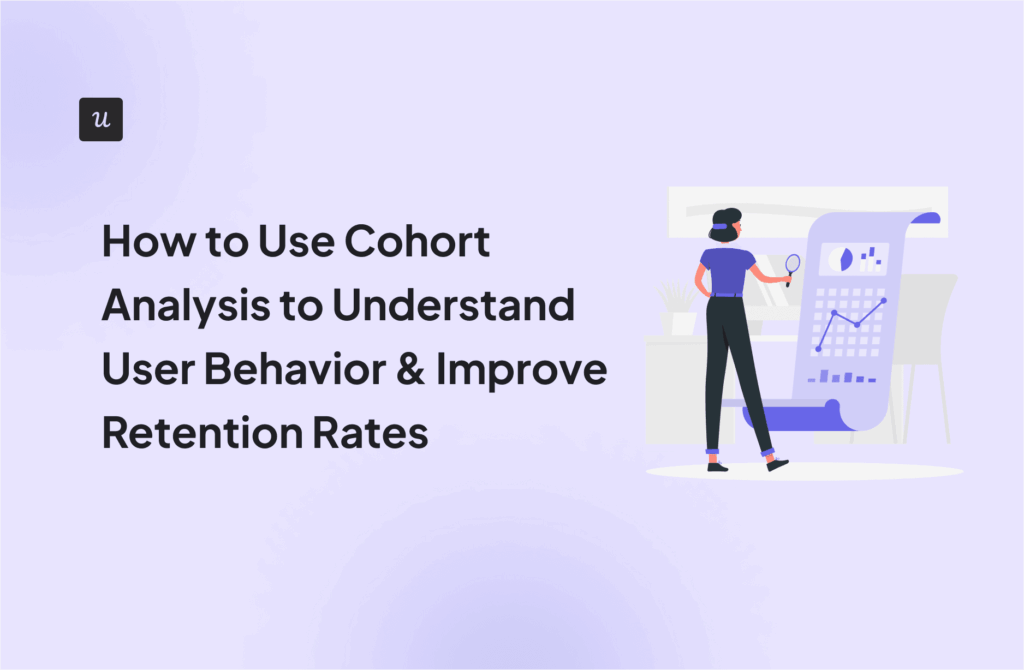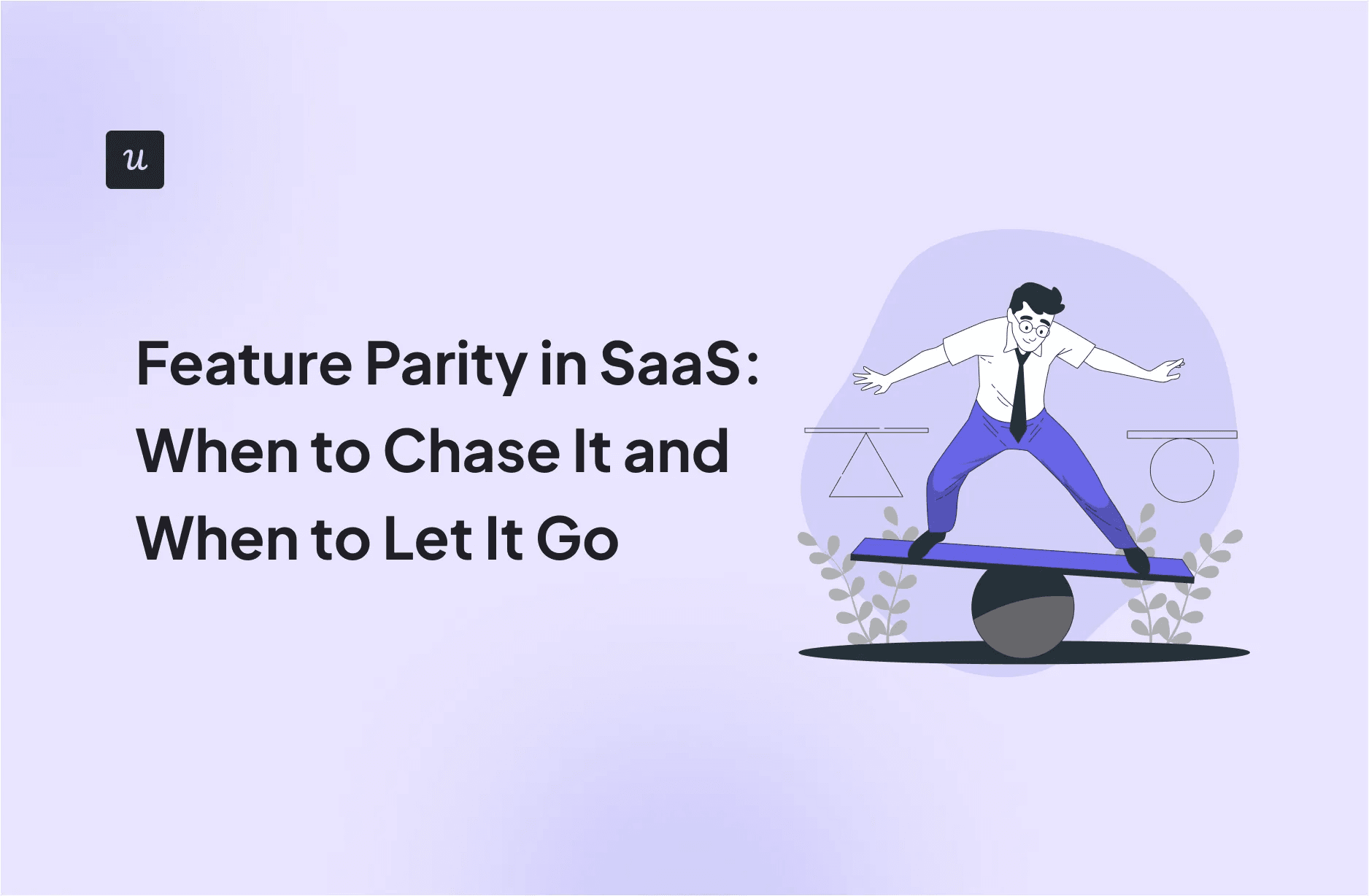
When I think about building SaaS products today, I don’t just picture a desktop or mobile app. I think across multiple “surfaces,” like mobile, web, browser extensions, widgets, and even smart TVs. Each surface serves a different purpose, offers different ways for users to interact with our product, and creates different expectations.
That’s where the idea of feature parity gets tricky. Do you replicate everything everywhere, or do you choose what belongs on each surface?
That tension is what I want to explore in this article. So, let’s unpack what feature parity means, why it can be misleading, and how we, as product people, can aim for true user value instead of simply mirroring what’s already out there.
How are you currently approaching feature parity with competitors?
Understanding your strategy helps identify the core challenge.
What’s the biggest challenge with your current feature development process?
Pinpointing the main friction point is key to solving the feature parity trap.
Stop Chasing Feature Parity. Start Driving User Value.
See how Userpilot helps you understand user behavior, boost feature adoption, and build a product that drives retention—based on data, not guesswork.
Try Userpilot Now
See Why 1,000+ Teams Choose Userpilot
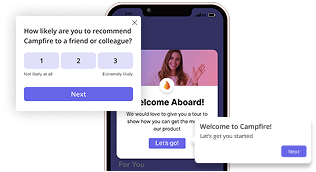
What is feature parity?
Feature parity refers to achieving functional equivalence across different products, platforms (iOS, Android, or web), or versions (latest release vs. legacy system). However, that doesn’t always mean exact duplication by adding every single feature everywhere.
Rather, functional equivalence means users can achieve the same outcome across surfaces, even if certain features look different or the workflows are trimmed down. That way, users can expect the same core capabilities, irrespective of the different platforms or versions they’re using.
But why is feature parity such a big deal in SaaS?
Primarily because SaaS users constantly move between devices, yet expect a consistent product experience each time. In practice, this means users don’t want to open your mobile app only to find that a key feature is only accessible on a desktop.
Feature parity is also a competitive signal for SaaS companies. If your product fails to provide a key feature on one surface, customers will notice, and may even switch to competitors who do it better.
Why is feature parity important?
The goal of feature parity is to give customers confidence that our product experience will hold up no matter where they use it. That’s why SaaS teams aim for parity, in support of broader objectives, like:
- Meet user expectations: Certain flows, such as billing, onboarding, or dashboards, need to feel identical across platforms. If they lack parity, customers start to wonder if the product is incomplete, which leads to mistrust and lower engagement.
- Achieve go-to-market alignment: Sales and Customer Success teams struggle when features differ across web and mobile apps, or even between pricing tiers. Parity helps keep the messaging consistent and easier to communicate.
- Maintain your competitive advantage: Buyers often evaluate SaaS tools side by side. So, if your product lacks core features that your competitor offers, that parity gap stands out and can easily sway the decision.
But the question is, at what point does chasing competitors for the sake of parity alone become problematic?
What’s the feature parity trap in SaaS?
The feature parity trap is when you copy every competitor feature just to “keep up.” Matching your competition seems intuitive at first, but inevitably, it leads to bloated roadmaps, diluted focus, and features that don’t serve customers.
But the feature parity trap doesn’t just exist at the competitive level. It can also occur within the same product when teams replicate existing features across platforms instead of innovating or adapting to user needs.
Take Microsoft, for example. It promised feature parity between the Xbox Series X and the lower-cost Series S. On paper, that sounded fair.
In practice, it held developers back. Because every game had to run on the weaker Series S hardware, which limited the new features they could build for the more powerful Series X. As a result, game releases got delayed or were shipped with missing features, further frustrating customers.
What does the feature parity trap cost you?
I’ve seen firsthand how trying to achieve feature parity can drain key resources:
- Fragmented focus and slower velocity: Trying to maintain feature parity leads to teams scattered across low-impact work that might not even benefit customers. While real user problems go unsolved. This results in a slower development process and stalled progress.
- Lower adoption of “us-too” features: Companies that prioritize innovation over imitation grow revenue 59% faster than those that don’t. Because when features exist only to match competitors, users rarely adopt them since they’ve already seen them elsewhere and don’t find new value.
- Decreased team morale: It’s demotivating to build features just because competitors have them, rather than because users need them. Over time, this hurts team motivation, with disengaged employees reportedly being 18% less productive than their engaged co-workers.
- Innovation cost: Keeping up with every competitor demands significant time and effort. This effort comes at a price, consuming resources that could be better spent exploring new ideas to differentiate the product and improve user satisfaction.
What are the different types of feature parity?
Feature parity comes in three forms, depending on whether you’re copying competitors, modernizing a legacy system, or building across platforms. Each type comes with its own stakes and traps.
Competitive feature parity
Competitive feature parity means offering the baseline functions buyers expect because competitors already have them. Your competitor launches a new feature, and the immediate thought is: “We need that too!” The aim is to match or even outdo what rivals offer to stay competitive.
The problem is that not every competitor feature is truly core. Some are just nice-to-haves. Fail to understand this difference, and you fall into the parity trap. By blindly copying roadmaps, you dilute your differentiation in feature development and end up with feature creep.
Plus, if you’re always the one playing catch-up to competitors instead of creating something unique, why would users pick you over your competition?
Legacy system parity
Legacy parity is when you’re building a new version of an existing system or product, perhaps moving from an old tech stack to a new one.
The goal is to replicate the current functionality of legacy systems. But too often, I see teams trying to replicate everything from the old system “just to be safe.” That leads to the parity trap, as teams drag forward outdated or unnecessary features and even the system’s original limitations.
At the same time, they polish the new UI but under-scope critical edge-case workflows that power users depend on. The result: feature bloat from unnecessary carryover and user frustration from missing must-haves.
The stakes are high here. If a critical report, permission, or batch operation doesn’t make it over, migrations stall. Power users revolt because workflows they’ve relied on for years vanish. And hidden but important jobs-to-be-done get lost in the shuffle, leaving loyal customers feeling abandoned.
Multi-platform parity
As products spread across different operating systems (like web, iOS, and Android) and devices, teams strive to offer the same core experiences everywhere. That’s what multi-platform parity is about: giving users a cohesive journey, no matter how they access your product.
Not all functions need to match across platforms, but certain core flows, such as onboarding, billing, search, and analytics, should remain consistent. If these diverge, user activation slows and retention takes a hit.
You fall into the parity trap here if you force every desktop feature onto mobile. That kind of one-to-one copying creates feature creep. Apps grow heavy, confusing, and harder to maintain. At the same time, teams fall into the opposite trap as well, by always shipping web-first and neglecting mobile for months, which leaves half the user base stuck with incomplete journeys.
For example, if updating a payment method works only on desktop, mobile users hit a dead end. Some might contact support, but many will churn. So, the challenge is understanding user behavior across platforms to contextually prioritize features.
My top 3 recommendations to avoid the feature parity trap
If matching features and chasing feature parity isn’t the answer, what do you do instead?
1. Ground feature parity decisions in market research
Feature parity shouldn’t come from copying competitors. In software development, that’s risky because it bloats your product with low-value features and distracts from the core jobs users care about. Instead, base parity decisions on real demand.
One way I do this is by regularly analyzing broader SaaS category trends to see what’s becoming standard and what’s still a differentiator. Next, I layer in data from Userpilot to test whether those features actually drive value, complementing external market data with internal adoption trends.
Here’s exactly how I do it:
- Feature tagging: Label the specific feature in Userpilot (e.g., “Dark Mode” or “Personalization Settings”).
- Event tracking: Monitor how often users interact with the feature, tracking clicks, toggles, or completions.
- Goal tracking: Tie that feature’s usage to a core outcome, like activation, a retention milestone, or a revenue event.
Suppose I want to see if enabling Dark Mode correlates with higher onboarding completion or greater return visits.
So I tag “Dark Mode.” I see that 70% of new users try it once, but only 15% return to it within the first week. With goal tracking, I find that users who enable Dark Mode don’t complete onboarding or hit retention milestones any faster. The conclusion? The feature may look nice on a parity checklist, but it isn’t a must-have.

2. Collect and act on user feedback
Another great way to ensure feature parity is by listening to your users directly. This way, you prevent wasted effort on features that sound impressive but don’t solve any problems.
To do this, I collect user feedback by continuously running feedback loops through in-app surveys, interviews, and churn analysis. This helps me validate which features actually block adoption versus ones that don’t really matter in daily use.
To put this into practice, I run in-app microsurveys with Userpilot to capture parity gaps in real-time. For example, asking “What’s missing in our mobile app?” right after someone completes a core task provides more context than asking weeks later over email.
I also run NPS surveys to track customer sentiment, following up with an open-ended question like, “What could we do to improve?” to identify whether missing features really contribute to user dissatisfaction.
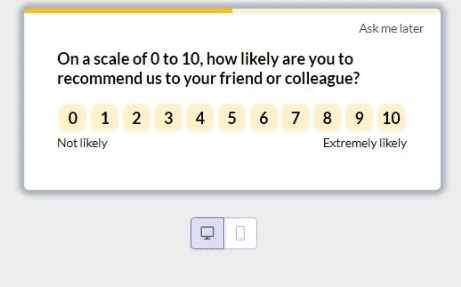
For more targeted customer feedback, I also segment surveys in Userpilot by audience, helping uncover experience gaps specific to each user group. For example, legacy system users may highlight missing workflows, whereas mobile-only users often flag gaps in parity across platforms.
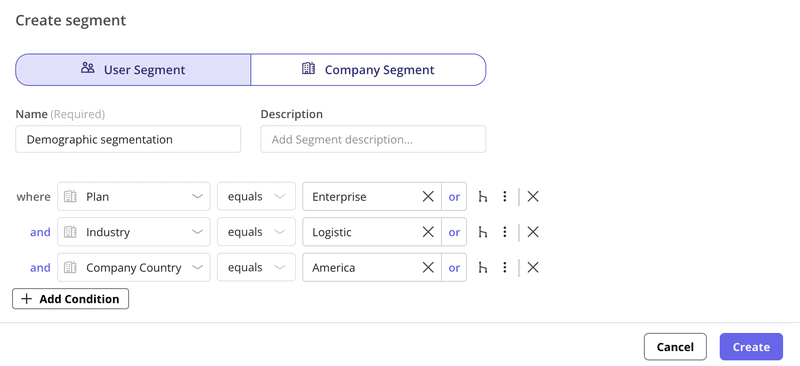
3. Use product analytics to prioritize parity work
Not all features are equally used. So I look at adoption data to guide and prioritize feature development. For example, if less than 5% of users touched a feature on the web, why race to replicate it on mobile?
In practice, I use user behavior analytics to understand how users interact with our product. Funnel analysis helps me see where users drop off in key flows, and user paths (which you can easily set up in Userpilot Paths) show me the actual journeys users take through the product. All this helps me pinpoint exactly where missing features caused drop-offs, highlighting parity gaps that hurt retention.
For instance, I might find that mobile users abandon a purchase flow because the final step only exists on the web. That’s a parity gap worth fixing, while a niche feature with almost no adoption can safely wait.
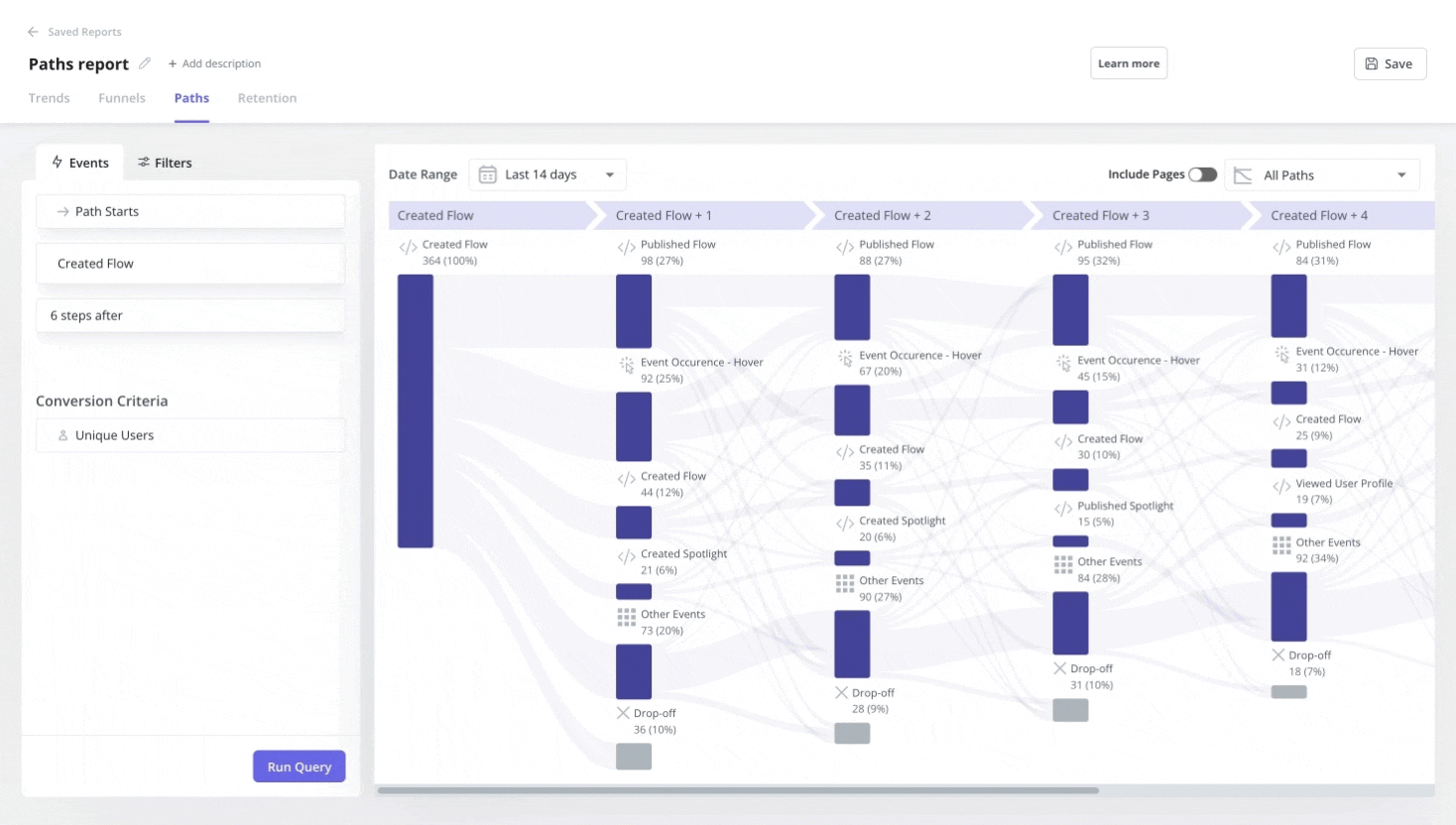
By this point, I’ve gathered three core inputs: market trends, user feedback, and analytics data. But how do I organize them to make a decision? That’s where the feature parity matrix comes in.
The feature parity matrix
The feature parity matrix gives SaaS teams a structured, practical tool to avoid the parity trap and make parity decisions with confidence.
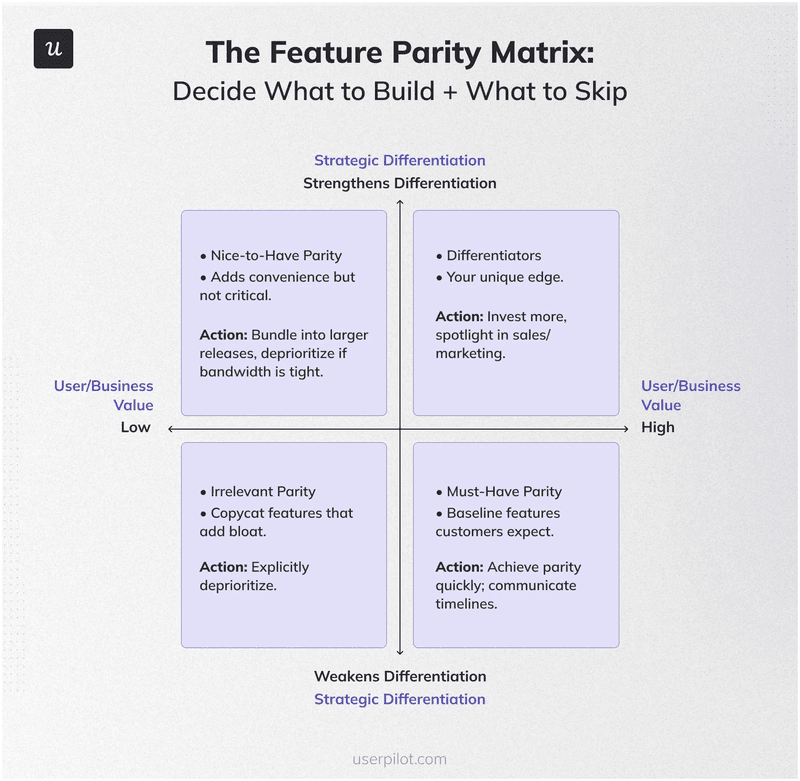
What it is:
- A 2×2 prioritization framework for deciding which parity requests matter.
- X-axis = user/business value impact (ranges from “Low” to “High”).
- Y-axis = strategic differentiation (ranges from “Strengthens Differentiation” to “Weakens Differentiation”).
Quadrants to include:
- Must-have parity: The most critical features that should always be prioritized, like onboarding, billing, or dashboards.
- Differentiators: The features that give your product its unique strengths. Don’t dilute them by chasing parity. Instead, double down on their value to strengthen differentiation.
- Nice-to-have parity: The features that add some value but don’t drive core outcomes. It’s fine to defer them or package them into larger releases.
- Irrelevant parity: The features with low value and no strategic edge. Explicitly deprioritize these because building them wastes time, clutters the product, and diverts resources from meaningful work.
Parity alone doesn’t win markets
Feature parity should serve as a baseline, not the ceiling. So don’t blindly chase parity just for the sake of keeping up, often at the risk of bloating your product with unnecessary features or dragging outdated workflows from legacy systems into the new one.
To avoid such feature parity traps, base parity decisions on market research, validate them with user feedback, and confirm priorities through product analytics. And rely on the feature parity matrix to tie it all together, separating must-haves from irrelevant parity requests that don’t create value.
Looking to make more informed decisions about your feature development? Book a Userpilot demo and see how you can collect user feedback and analyze in-app events to prioritize the right features.
FAQ
What is an example of feature parity?
An example of feature parity is when the mobile version of a video conferencing app, such as Zoom, is updated to include basic functionality already available on the desktop version. These features, such as screen sharing or background blur, provide a more consistent user experience across both platforms.
What is the feature function parity?
Feature function parity refers to the state where different versions of a software application, such as web, mobile, or desktop, offer the same features and perform the same functions. This allows users to switch between platforms without losing capabilities or experiencing limitations.
What does functional parity mean?
Functional parity means that different versions of a product offer the same core functionality across platforms. Not to be confused with feature parity, which goes a step further by making sure that all the latest features and enhancements are also consistent across various surfaces.

